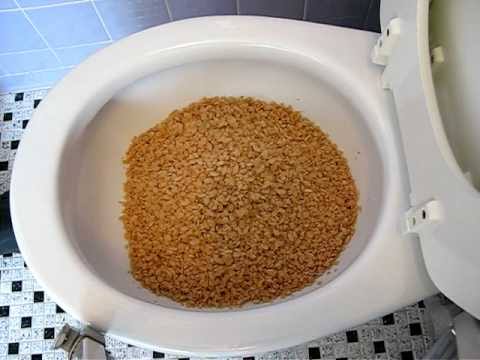Just how do you really feel in regards to Is it safe to flush food (especially rice) down the toilet??

Intro
Many individuals are frequently faced with the predicament of what to do with food waste, specifically when it involves leftovers or scraps. One common question that emerges is whether it's all right to flush food down the commode. In this write-up, we'll delve into the reasons why individuals might think about purging food, the effects of doing so, and alternate techniques for correct disposal.
Reasons people could think about flushing food
Absence of understanding
Some people may not know the prospective injury brought on by purging food down the toilet. They might erroneously think that it's a harmless practice.
Convenience
Flushing food down the bathroom might feel like a fast and easy service to getting rid of undesirable scraps, particularly when there's no close-by trash bin readily available.
Laziness
In many cases, individuals might just pick to flush food out of large laziness, without taking into consideration the repercussions of their activities.
Effects of flushing food down the bathroom
Environmental influence
Food waste that ends up in rivers can add to air pollution and injury marine ecosystems. Furthermore, the water utilized to flush food can strain water sources.
Plumbing concerns
Purging food can lead to clogged pipelines and drains, creating expensive pipes repair services and aggravations.
Kinds of food that must not be purged
Coarse foods
Foods with fibrous structures such as celery or corn husks can obtain entangled in pipelines and trigger blockages.
Starchy foods
Starchy foods like pasta and rice can take in water and swell, resulting in obstructions in pipelines.
Oils and fats
Greasy foods like bacon or food preparation oils must never ever be flushed down the commode as they can strengthen and create obstructions.
Proper disposal methods for food waste
Using a waste disposal unit
For homes equipped with waste disposal unit, food scraps can be ground up and flushed through the pipes system. Nevertheless, not all foods are suitable for disposal in this manner.
Recycling
Specific food product packaging materials can be reused, reducing waste and minimizing environmental impact.
Composting
Composting is an environmentally friendly way to take care of food waste. Organic materials can be composted and used to improve dirt for horticulture.
The significance of correct waste monitoring
Lowering environmental harm
Proper waste management methods, such as composting and recycling, aid minimize air pollution and protect natural resources for future generations.
Protecting pipes systems
By preventing the method of flushing food down the toilet, homeowners can prevent costly pipes repairs and maintain the stability of their plumbing systems.
Final thought
In conclusion, while it may be appealing to purge food down the toilet for convenience, it is essential to understand the prospective consequences of this activity. By taking on appropriate waste monitoring practices and disposing of food waste sensibly, individuals can contribute to much healthier plumbing systems and a cleaner atmosphere for all.
FLUSH FOOD DOWN THE TOILET?
FLUSHING FOOD CAN CAUSE BLOCKED DRAINS IN YOUR HOME
All of the plumbing fixtures in your home are connected to the same sewer pipe outside of your home. This outdoor sewer pipe is responsible for transporting all the wastewater from your home to the Council sewer mains. Even small pieces of food that go down the kitchen sink can cause problems for your sewer. It should therefore be obvious that flushing larger bits of food, such as meat, risks a clog in either the toilet itself or the sewer pipes. Flushing greasy food is even more problematic because oil coagulates when it cools, coating the interior lining of your pipes.
THE TOILET IS NOT A BIN
Food isn’t the only thing that people shouldn’t be flushing down the toilet. People use the toilet to dispose of all kinds of things such as tampons, makeup wipes, dental floss, kitty litter and even underwear. Water goes to great lengths to educate residents about the high costs and stress placed on wastewater treatment systems simply from people flushing the wrong stuff down the toilet. It costs taxpayers millions of dollars each year, and homeowners thousands in blocked drain repairs.
FLUSHING FOOD IS A WASTE OF WATER
Flushing food is a waste of our most precious resource - water. In June this year Level 1 water restrictions were introduced to protect water supply from drought conditions. Much of New South Wales continues to be affected by prolonged drought with recent figures revealing up to 97 per cent of the state remains in drought. Depending on whether you have a single or dual flush toilet, every single flush uses between five and 11 litres of water. In the current climate this is a huge amount of water to be wasting on flushing food that should be placed in the bin (or better yet, the compost).
https://www.jabplumbingsolutions.com.au/blog/can-you-flush-food-down-the-toilet

I found that page on when doing a lookup on the internet. Feel free to take the opportunity to distribute this content if you appreciated it. We recognize the value of reading our article about Is it safe to flush food (especially rice) down the toilet?.
Further Details